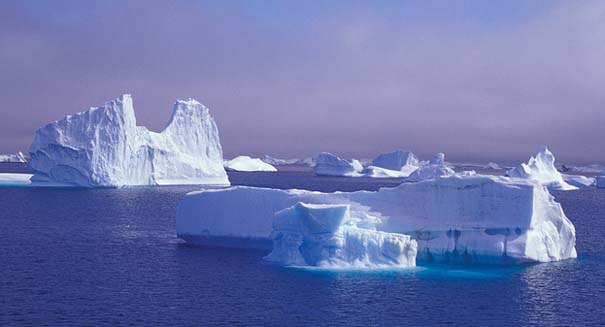
The previous low of -128.6 F was set in 1983 at the Russian Vostok Research Station in East Antarctica.
Brrr that’s cold: according to a news release, from NASA’s Goddard Space Flight Center, scientists have discovered the coldest place on Earth. It just so happened to be a high ridge in Antarctica on the East Antarctica Plateau where temperatures in several hollows can drop below -133.6 degrees Fahrenheit on a clear winter night.
The finding was made while scientists looked over global surface temperature maps, created with data from remote sensing satellites, like the new Landsat 8. They pored over 32 years’ worth of data from several satellite instruments and discovered that temperatures dropped to record lows numerous times in clusters of pockets near a high ridge between Dome Argus and Dome Fuji. The new record of -136 F was set on August 10, 2010. The previous low of -128.6 F was set in 1983 at the Russian Vostok Research Station in East Antarctica.
Researchers were examining big snow dunes on the East Antarctic Plateau, when they discovered cracks in the snow surface between the dunes, likely made when temperatures got so cold the top snow layer became smaller. This encouraged scientists to examine what the actual temperature range on the continent was.
Scientists used Moderate Resolution Imaging Spectroradiometer (MODIS) instruments on NASA’s Terra and Aqua satellites and the Advanced Very High Resolution Radiometer (AVHRR) on several National Oceanic and Atmospheric Administration satellites to help them with their investigation. Utilizing these sensors to survey the East Antarctic Plateau, the scientists picked up extremely cold temperatures on a 620-mile stretch of the ridge at high elevations between Argus and Fuji, and even colder temperatures at lower elevations in pockets off the ridge. Using the Thermal Infrared Sensors aboard Landsat 8, the scientists focused in on record-setting pockets.
The researchers looked at the topographic maps to determine why it gets so cold at particular sites on Antarctica. If clear skies stick around for a few days, the ground chills as it give off its remaining heat into space. This forms a layer of super-chilled air above the surface of the snow and ice. This layer of air is denser than the somewhat warmer air above it, which forces it to slide down the shallow slope of domes on the Antarctica plateau. As it moves into the pockets, it can become stuck, and the cooling continues.
What’s the coldest temperature you’ve ever experienced?
Leave a Reply